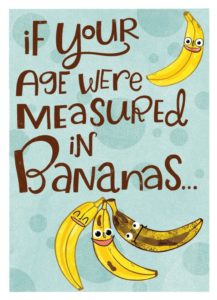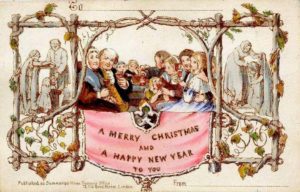The history of a greeting card dates all the way back to the 1400s when Europeans exchanged handmade greeting cards. Greeting cards were used to celebrate the Chinese New Year, and early Egyptians used papyrus scrolls to send greetings. Though greeting cards have expanded over the years, their purpose still remains the same: express feelings of gratitude, celebration, sympathy, or love. Today, people make sure to commemorate every holiday, birthday and milestone in a person’s life. But, when did these greetings become so popular?
CHRISTMAS CARDS
A Christmas card was sold at auction in the UK for $28,158. According to the Guinness Book of World Records, it was the world’s first Christmas card. It was sent by Sir Henry Cole, the inventor of the Christmas card, to his grandmother in 1843.
With the expansion of The British Postal System in 1940, people were able to send letters for one penny. Sir Cole received stacks and stacks of letters. In order to respond to everyone in a timely manner, he had someone illustrate the above image. They made thousands of copies. They read, “A Merry Christmas and A Happy New Year to you.” Sir Cole personalized each card with that person’s name. People soon began sending their letters out as cards during Christmastime too. As of today, the U.S. sends nearly a billion and a half Christmas cards annually.
VALENTINE CARDS
 Valentine’s Day Cards for Anyone
Valentine’s Day Cards for Anyone
Exchanging Valentine’s Day cards started in the 16th century. They grew in popularity in England in the 1700s when cards were sent with flowers anonymously signed ‘Your Valentine.’ By the 1800s, hand-painted copperplates were in high demand. With The British Postal System’s new penny postage, people began to send their Valentine’s Day cards with delicate lace paper to lower the weight of the package sent.
BIRTHDAY CARDS
While cards with sentiments were exchanged since the 1400s, it’s believed that in the mid-19th century, they grew in popularity after mass production, better postal routes, and cheaper postal rates. Greeting cards were sent for all occasions due to the newfound greeting card affordability. Birthday Cards account for 60% of all individual everyday cards sold today.
United States

By 1910, both seasonal and everyday greeting cards were being produced in the U.S. New designs were created for each occasion rather than mass producing a singular image. By 1930, card humor became popular as a means to cheer people up during the war, and ribbon and feather embellishments grew in design. By 2010, U.S. households purchased 7 billion greeting cards annually.
Greeting Cards = Timeless
Despite the ever-growing world of social media, people still enjoy that sentimental hand-written card from a loved one. Millennials find that they don’t need an occasion to send a card in the mail. They enjoy simply sending Thinking of You cards to let someone know that they were on their mind. There is a lot of comfort in a physical greeting card as a way to stay in touch. Millennials, who have proven to be the number 1 customer for greeting cards, are also buying cards more locally as a way to support small business, as well as cards that are sustainable and made from recycled materials.
Since 1988, greeting cards have been recognized with awards called The Louies. (The Louie Awards are kind of like what the Oscars are for film!) The Louies were named after Louis Prang, the man credited with producing one of the first lines of Christmas cards in the U.S. in 1875. Each year, the card of the year is chosen for its impact, design and value.
For a complete greeting card history, check out The Greeting Card Association’s timeline.
Be sure to follow us on Instagram @TheGreetingCardShop for more greeting card related information!



